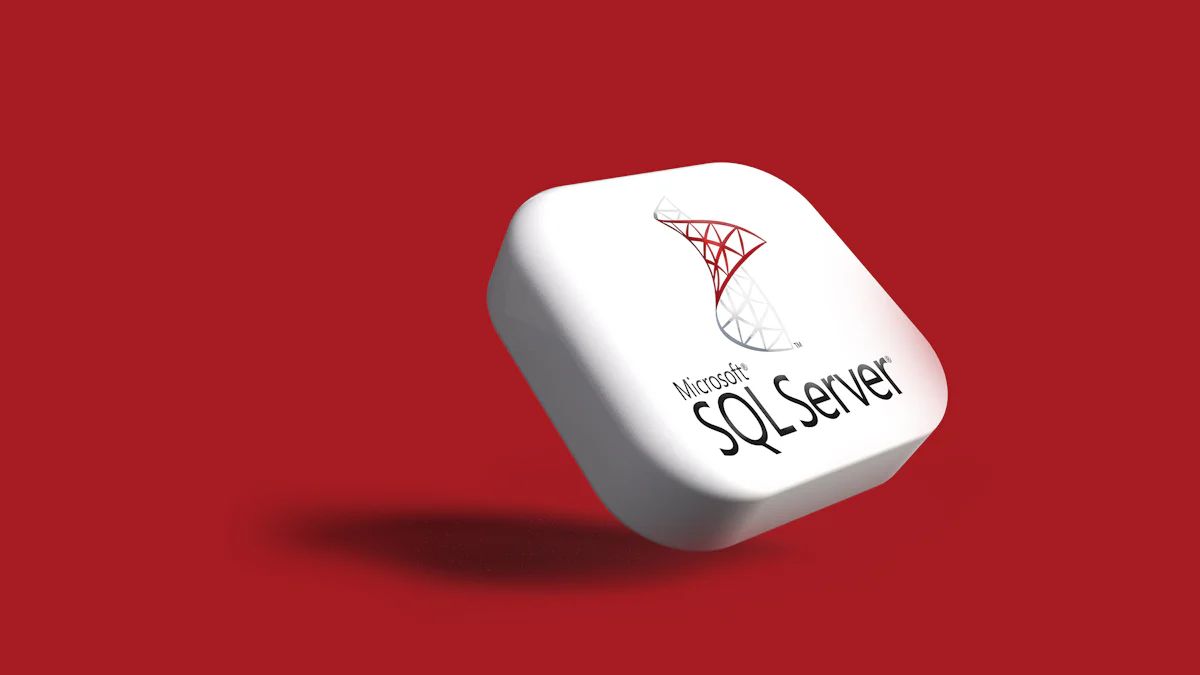Choosing the right database management system (DBMS) is crucial for any organization. The decision impacts performance, security, and scalability. When comparing PostgreSQL vs SQL Server, these two are among the most popular relational DBMS options available today.
PostgreSQL vs SQL Server: PostgreSQL stands out due to its open-source nature, advanced features, and superior concurrency management. It supports both relational (SQL) and non-relational (JSON) data types, making it versatile for various applications.
PostgreSQL vs SQL Server: SQL Server, owned by Microsoft, has been the favored option for large organizations relying on Microsoft's product suite. It offers robust security features and seamless integration with other Microsoft tools.
PostgreSQL vs SQL Server: Overview of PostgreSQL
PostgreSQL vs SQL Server: History and Development
Origins and Evolution
PostgreSQL originated at the University of California, Berkeley. The project began as a post-Ingres initiative in the 1980s. The development team aimed to address the limitations of the Ingres database system. The initial version, known as Postgres, introduced several innovative features. Over time, the project evolved into PostgreSQL, an open-source relational database management system (RDBMS). Regular updates and significant enhancements have marked its journey.
Key Milestones
Several key milestones have shaped PostgreSQL's development. The release of PostgreSQL 6.0 in 1997 marked a significant step forward. This version introduced advanced features like subqueries and outer joins. During the initial 6.* era, the development team focused on speed enhancements and improved built-in types. The introduction of Multiversion Concurrency Control (MVCC) was another major milestone. MVCC significantly improved the database's performance and concurrency management.
PostgreSQL vs SQL Server: Core Features
Open-Source Nature
PostgreSQL's open-source nature sets it apart from many other RDBMS options. The community-driven development model ensures continuous improvement and innovation. Users can access the source code, modify it, and distribute their versions. This flexibility makes PostgreSQL an attractive choice for developers and organizations. The open-source license also reduces the total cost of ownership.
Extensibility and Customization
PostgreSQL excels in extensibility and customization. The database supports various extensions, allowing users to add new functionalities. Users can create custom data types, operators, and functions. This feature enables developers to tailor the database to specific application needs. PostgreSQL's support for procedural languages like PL/pgSQL, PL/Python, and PL/Perl further enhances its versatility.
PostgreSQL vs SQL Server: Use Cases
Common Applications
PostgreSQL finds applications in various domains. Web development, data warehousing, and scientific computing are common use cases. The database's support for JSON and geospatial data types makes it suitable for modern applications. PostgreSQL's robust feature set and performance make it a preferred choice for complex queries and large datasets.
Industry Adoption
Many industries have adopted PostgreSQL due to its reliability and performance. Technology companies, financial institutions, and government agencies use PostgreSQL for mission-critical applications. The database's open-source nature and strong community support contribute to its widespread adoption. PostgreSQL's ability to handle high-concurrency workloads and complex transactions makes it ideal for enterprise environments.
PostgreSQL vs SQL Server: Overview of SQL Server
PostgreSQL vs SQL Server: History and Development
Origins and Evolution
Microsoft SQL Server began its journey in the late 1980s. The initial version, SQL Server 1.0, was a collaboration between Microsoft and Sybase. This partnership aimed to bring a relational database management system to the market. Over time, Microsoft took full control of the development and released subsequent versions independently. Each release brought significant improvements in performance, scalability, and functionality.
Key Milestones
Several key milestones have defined SQL Server's evolution. The release of SQL Server 4.2 in 1992 introduced substantial performance enhancements and improved functionality. In 1995, SQL Server 6.0 marked a significant leap with improvements in performance, scalability, and data integrity. The year 2000 saw another major upgrade with SQL Server 2000. This version introduced data mining, database replication, backup compression, and support for Windows Server OS. These milestones have contributed to SQL Server's robust and reliable nature.
PostgreSQL vs SQL Server: Core Features
Integration with Microsoft Ecosystem
SQL Server offers seamless integration with the Microsoft ecosystem. Organizations using Microsoft products benefit from this tight integration. SQL Server works well with tools like Visual Studio, Azure, and Power BI. This compatibility enhances productivity and simplifies workflows. The integration also ensures smooth data flow between different Microsoft applications.
Security Features
SQL Server provides robust security features. The database includes advanced encryption methods to protect sensitive data. SQL Server also offers role-based access control, ensuring that only authorized users can access specific data. The built-in auditing capabilities help organizations track and monitor database activities. These security features make SQL Server a preferred choice for enterprises with stringent security requirements.
PostgreSQL vs SQL Server: Use Cases
Common Applications
SQL Server finds applications in various domains. Businesses use SQL Server for enterprise resource planning (ERP) systems, customer relationship management (CRM) systems, and e-commerce platforms. The database's ability to handle large volumes of transactions makes it suitable for financial applications. SQL Server's integration with business intelligence tools also makes it ideal for data analytics and reporting.
Industry Adoption
Many industries have adopted SQL Server due to its reliability and performance. Large enterprises, healthcare organizations, and educational institutions rely on SQL Server for their data management needs. The database's strong security features and seamless integration with Microsoft tools contribute to its widespread adoption. SQL Server's ability to handle complex queries and large datasets makes it a valuable asset for mission-critical applications.
PostgreSQL vs SQL Server: Technical Comparisons
PostgreSQL vs SQL Server: Performance
Query Optimization
PostgreSQL and SQL Server employ different strategies for query optimization. PostgreSQL uses a cost-based optimizer that evaluates multiple execution plans before choosing the most efficient one. This approach ensures optimal performance for complex queries. SQL Server, on the other hand, leverages its traditional structure to deliver high performance for specific applications. The database engine in SQL Server uses advanced algorithms to optimize queries, making it suitable for high-volume transaction processing.
Scalability
Scalability is a critical factor when comparing PostgreSQL vs SQL Server. PostgreSQL excels in managing large data quantities and concurrent users. The database's Multiversion Concurrency Control (MVCC) reduces deadlock occurrences, enhancing performance in multiuser environments. SQL Server also offers robust scalability features. Partitioning and optimization techniques in SQL Server allow for efficient large data processing. Both databases provide scalable solutions, but the choice depends on specific use cases and performance requirements.
PostgreSQL vs SQL Server: Data Types and Indexing
Supported Data Types
PostgreSQL supports a wide range of data types, including JSON, XML, and geospatial data. This versatility makes PostgreSQL suitable for modern applications requiring diverse data formats. SQL Server also offers extensive data type support, including XML and JSON. However, SQL Server's integration with the Microsoft ecosystem provides additional advantages for applications relying on Microsoft tools.
Indexing Mechanisms
Indexing mechanisms play a crucial role in database performance. PostgreSQL provides various indexing options, such as B-tree, hash, GiST, and GIN indexes. These options allow developers to choose the most appropriate indexing method for their specific needs. SQL Server offers similar indexing mechanisms, including clustered and non-clustered indexes. The choice of indexing method depends on the application's requirements and the nature of the data being managed.
PostgreSQL vs SQL Server: Backup and Recovery
Backup Strategies
Backup strategies are essential for data protection and disaster recovery. PostgreSQL supports various backup methods, including SQL dump and continuous archiving. These methods ensure data integrity and facilitate quick recovery in case of data loss. SQL Server offers comprehensive backup options, including full, differential, and transaction log backups. These options provide flexibility and ensure that organizations can implement robust backup strategies tailored to their needs.
Recovery Options
Recovery options are vital for maintaining database availability. PostgreSQL provides several recovery mechanisms, such as point-in-time recovery and streaming replication. These features enable organizations to restore databases to a specific state, minimizing downtime. SQL Server also offers advanced recovery options, including database mirroring and Always On Availability Groups. These features ensure high availability and quick recovery, making SQL Server a reliable choice for mission-critical applications.
PostgreSQL vs SQL Server: Functional Comparisons
PostgreSQL vs SQL Server: Licensing and Cost
PostgreSQL Licensing
PostgreSQL operates under the PostgreSQL License, an open-source license similar to the MIT License. This license allows users to use, modify, and distribute the software without any cost. Organizations benefit from reduced total cost of ownership due to the absence of licensing fees. The open-source nature also encourages innovation and customization, making PostgreSQL a flexible choice for various applications.
SQL Server Licensing
SQL Server follows a proprietary licensing model managed by Microsoft. Licensing options include per-core, server plus CAL (Client Access License), and subscription-based models. The cost varies based on the edition and deployment method. Enterprises often choose SQL Server for its robust features and seamless integration with other Microsoft products. However, the licensing fees can be substantial, impacting the overall budget.
PostgreSQL vs SQL Server: Community and Support
PostgreSQL Community
The PostgreSQL community thrives on active participation from developers, users, and contributors worldwide. This vibrant community continuously improves and updates the database. Users can access extensive documentation, forums, mailing lists, and third-party tools. The collaborative environment fosters innovation and provides robust support for troubleshooting and development needs.
SQL Server Support
SQL Server benefits from Microsoft's comprehensive support infrastructure. Enterprises can access professional support through various channels, including Microsoft's support services, online resources, and community forums. The integration with the broader Microsoft ecosystem ensures that users receive timely updates and patches. This structured support system makes SQL Server a reliable choice for mission-critical applications.
PostgreSQL vs SQL Server: Integration and Compatibility
Integration with Other Tools
PostgreSQL offers extensive integration capabilities with various tools and systems. The database supports multiple procedural languages, including PL/pgSQL, PL/Python, and PL/Perl. This flexibility allows developers to create custom functions and integrate with other systems seamlessly. PostgreSQL's extensibility makes it suitable for diverse applications and environments.
SQL Server excels in integration with the Microsoft ecosystem. The database works well with tools like Visual Studio, Azure, and Power BI. This compatibility enhances productivity and simplifies workflows. Organizations using Microsoft products benefit from the tight integration, ensuring smooth data flow between different applications.
Compatibility with Different Platforms
PostgreSQL provides platform independence, supporting various operating systems such as Windows, Linux, and macOS. This versatility makes PostgreSQL an attractive option for organizations with diverse IT environments. The database's ability to run on multiple platforms ensures flexibility and ease of deployment.
SQL Server primarily targets Windows environments but also supports Linux. The database's compatibility with different platforms allows organizations to choose the best deployment method for their needs. SQL Server's robust features and integration with Microsoft tools make it a preferred choice for enterprises relying on the Microsoft ecosystem.
Understanding the key differences between PostgreSQL and SQL Server is crucial for making an informed decision. PostgreSQL offers open-source flexibility, advanced features, and superior concurrency management. SQL Server provides robust security, seamless integration with Microsoft tools, and strong support.






